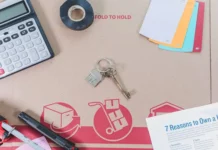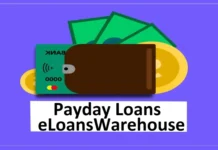With the popularity of smartphones and tablets, it’s no wonder that push notifications are becoming increasingly popular in the marketing world.
To get the most out of push notifications, it’s essential to understand how they work and how to set up your app correctly. This guide will teach you how push notifications work and how to use them to increase engagement and reach your target audience.
Contents
What Are Push Notifications?
Push notifications send updates to a user’s phone without having to visit a website or app actively. They’re sent as a push notification regardless of whether they’re currently opening the app. Push notifications are a great way to keep your users informed about critical updates or changes without actively searching for them.

Types of Push Notifications
We’ve compiled a list of the top most innovative types of push notifications to help you increase your CTR and customers’ engagement with your mobile app:
- Geofencing Push Notifications
Geofencing is a form of location-based marketing that uses geographic boundaries defined by GPS or other coordinates. In the context of push notifications, geofencing allows you to create triggers based on user proximity to a specific location.
For example, if you own a retail store and want to send special offers to customers when they enter your store or let them know about flash sales when they get close to purchasing an item, geofencing can help you do this automatically.
- Rich Notifications with Media Attachments
Rich notifications are push notifications that deliver more information than traditional notifications and can include media attachments. They’re also interactive, so users can respond to messages or share photos within the notification.
Rich notifications were introduced in iOS as an evolution of regular notifications; they’re currently only available for iPhone users. To create high-quality notification campaigns, you can use Reteno app engagement and others such as Bold360 and Astute Solutions.
- Repeated Notifications with Actionable Widgets
Repeated notifications are push notifications that repeatedly appear over time. They’re intended for situations when you need to remind users about an event or task, such as calendar events or messages from a messaging app. Actionable widgets are interactive components that let users act within the notification. For example, you could include buttons for sharing photos or replying to messages on social media.
- Contextualized Push Notification
Contextualized push notifications are more advanced forms developers can send using application programming interfaces (APIs) provided by Apple and third-party providers. These notifications are generated from data stored in an app or service, allowing businesses to send relevant information directly to users’ devices without creating custom codes for every message. This approach benefits user-specific messages like recommendations, shopping offers, and news updates.

How Do Push Notifications Work?
There are two main ways a user can receive push notifications: they can be accepted as an alert on their lock screen or opt-in to receive them as a banner notification. The choice is left up to the developer and depends on how crucial getting user interaction is for their app or website.
Push notifications send small chunks of data to a server via HTTP requests. These requests contain information such as who sent the request and what type of device the request came from. This information is essential for developers to track and make changes to their app or website if necessary.
The main advantage of push notifications is that they’re easy to set up and can be sent anytime without developing software. This makes them a good option for companies working on small projects with little time or money to spend on developing apps or websites.
Tips for Using Push Notifications to Your Advantage
If you want to improve customer engagement, push notifications are a great way to do it. Here are five tips to help you get the most out of them:
- Use them sparingly. Too many notifications can be annoying and cause people to opt out. Try to limit the number of messages you send to a couple per day, and make sure they are relevant and exciting.
- Make them relevant. Notifications should be timely and relevant to the recipient. That way, they will be likelier to pay attention to and act on them.
- Keep them short. Keep your notifications concise so people can digest them quickly.
- Use images. Including a picture or an emoji in your notification can make it more compelling and stand out from the other messages that populate a user’s phone screen.
- Be interactive. If possible, make your notifications interactive so people can respond immediately or act on them later.
Conclusion
Push notifications is a great way to keep your customers engaged with your brand. By sending timely, relevant messages, you can keep them informed about your latest marketing campaigns, product releases, and more. Push notifications can also prompt customers to take action on a purchase or respond to a survey. By using push notifications correctly, businesses can increase customer loyalty and engagement.









































 Online casino
Online casino